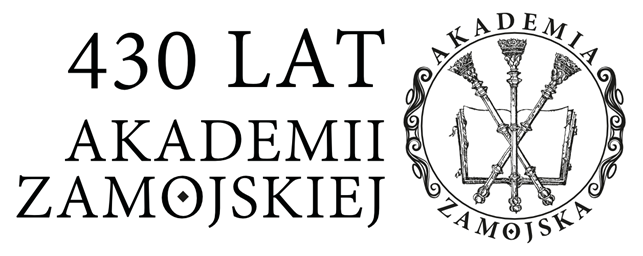The symbolism of the Zodiacal Circle in Jewish art of Eastern Halychyna of XVIII – the first third of the XX centuries
Nataliya Levkovych
Abstract
In recent years, there has been an increasing interest in the study of art as an integrated system, in the search of variable elements that make it possible to analyse the nature and patterns of an overall process and individual phenomena. This inevitably leads to the research of a symbol, which allows to define the features of national cultures art, spiritual story and ideology. Art refers to a character as one of the means of artistic expression, imaginative thinking and language, which includes encoded history and myths that enables to feel it through generations. Characters, encoded in the monuments of Jewish arts and crafts reflect leading aesthetic ideology of people. The results of the research support the idea that using astral symbols in Judaism has a very deep tradition. The Torah texts quite often appeal to the heavenly bodies, their appearance is connected with the divine plan [Breishit 1: 14-17]. According to the will of Almighty, the Sun was created to control the seasons on the Earth and the Moon determines the holidays. Every new month began with a new phase - the new moon. These days were especially celebrated among the Jews during the biblical period. People brought special sacrifices to temples, trumpeted in a ritual horn [Ps. 80.4-5.] The stars are mentioned at the end of the creation process but the Torah does not explain why they were created; in the Talmud their role in people’s life is not sufficient as opposed to the Sun and the Moon. In the comments to the Torah Rashi calls constellation “servants of months,” and the Torah with their help describes the time; the zodiac signs are used to determine the months of the year. Thus the model of the universe is clearly formed in astrology and the heavenly bodies have become an integral part of Jewish culture, they performed a number of essential functions. Division for 12 tribes of Israel corresponds to the division for 12 months. The Bible describes the location of the clans of sons of Israel during the exodus from Egypt around the Pavilion of Revelation from the four sides of the world [Bemidbar 2: 2-32]. The importance of the heavenly bodies, planets and stars in the lives of the Jews is also indicated in the traditional Hebrew greetings like “Mazel Tov” - “mazel” is translated as constellation, a zodiac sign, a planet, and fate, and “tov” means good. In the greetings the meaning of success and a good star is a basis. The importance of Jewish zodiac signs is mentioned in a prayer that is recited by 9 Aves. The day when Jews gather in synagogues to mourn the destroyed Temple, all read “Keane” – a funeral prayer, which is based on the sequence of zodiac signs. Astronomical ideology of Jews was formed under the influence of Babylon, teachings of Zoroastrianism, Platonism and Roman science that had a significant impact throughout the Middle East. Ambivalence of rights to picture the heavenly bodies, planets and zodiac signs in theological debates of the leading European ravinist diaspora of different times did not lead to the rejection of their reproduction in Eastern Halychyna in the XVIII - the first third of the XX century. The solar disks, symbols of the zodiac signs traditionally decorate the most important sacred sites and objects: synagogues’ walls and Aron-ha-Kodesh, the Crowns of Torah, ritual dishes for the new-born ceremony. An image of the solar disk with rays, often covered with gold, is introduced in the composition of Aron-ha-Kodesh. Mostly decorating an overall design, the divine light is a symbol of the divine presence and in some cases supplemented with Tetragrammaton. Also in the synagogues of Eastern Halychyna the practice to replace the image of the Sun with the “divine light” becomes common, which is implemented by using the round window located above the Aron-ha-Kodesh. The samples of this solution is Aron-ha-Kodesh in the Synagogue in Zhovkva, Khorostkiv, Pidhaitsi, Gusiatyn, Sambir. It should be noted that such a tradition was typical for the Christian churches. We conclude that a zodiacal circle is one of the most important characters in Jewish philosophy, which embodies basic cosmological ideas, it is the divine gift of the people of Israel, whereby codifying the major historical landmarks and spiritual stages. The appearance of the heavenly bodies in Judaism is an act of God’s will, and the images are described in the second commandment of Dkadeloh and numerous comments of the leading ravinists and philosophers. The symbols and signs of the zodiac and iconography of their images in Jewish culture were shaped by astronomy of ancient Babylon. The ideology of the process of creation and the universe, meaning of months in the life of Jews and a wish of good luck were embodied in the signs of zodiac. Eventually the pictures of zodiac symbols lose their deep meaning and acquire the features of an iconic ornamental motif.
Keywords:
horoscope, Jewish astrology, Torah, Talmud, Sun, stars, Moon, Jewish philosophy, celestial bodies, astral symbolsDetails
References
Statistics
Authors
Citation rules
Licence

This work is licensed under a Creative Commons Attribution-NonCommercial-ShareAlike 4.0 International License.


 Język Polski
Język Polski
 English
English




